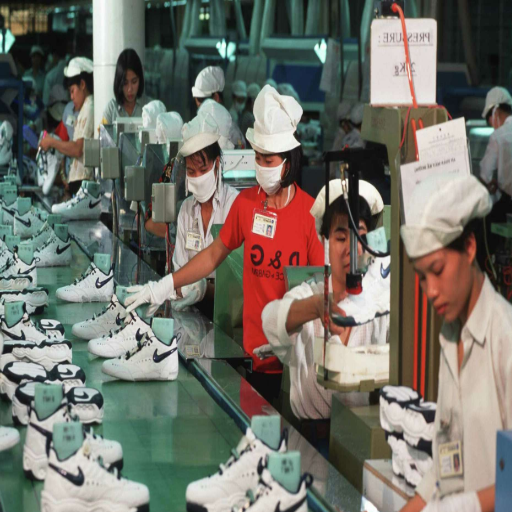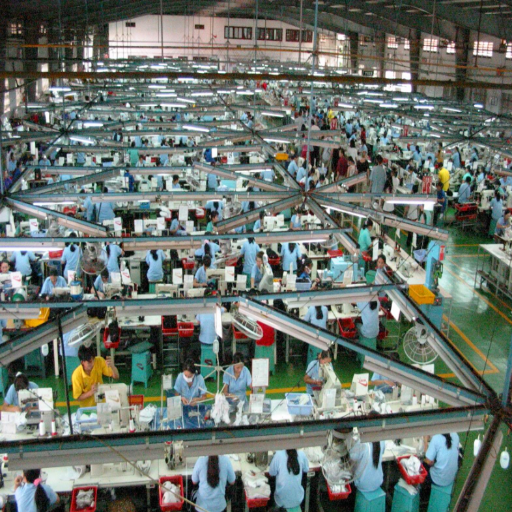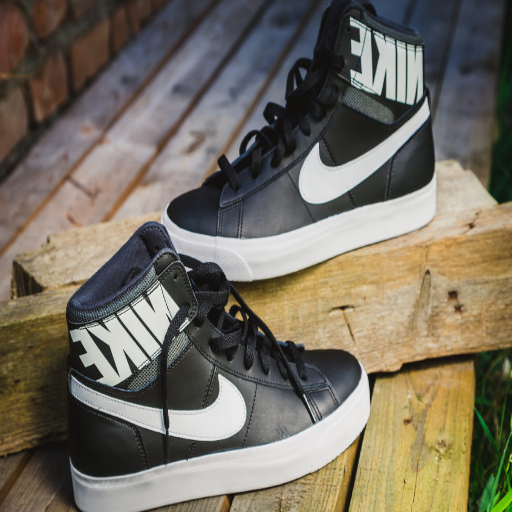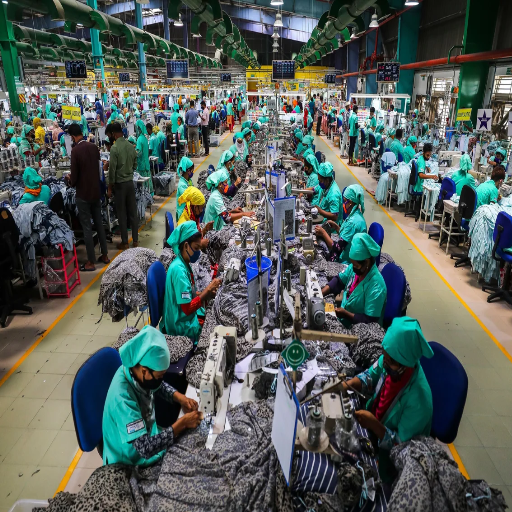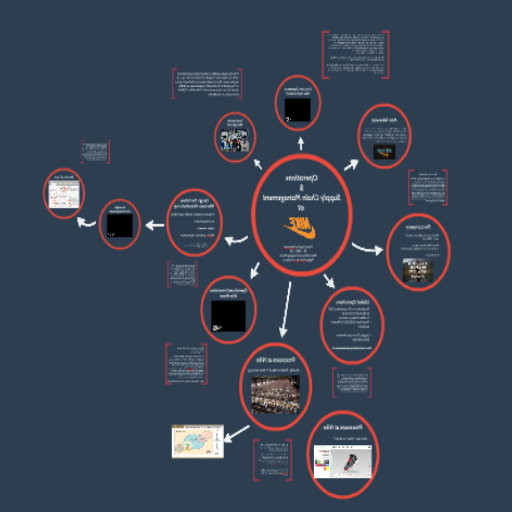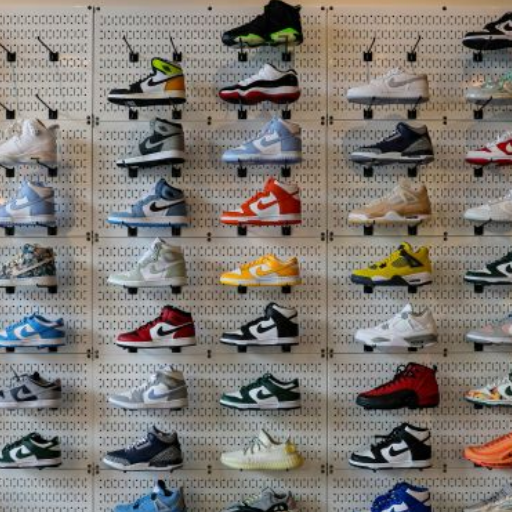Nike has been a global leader and one of the most renowned companies in the sportswear industry because of its addictive cutting-edge designs, innovative technology, and unrivaled commitment to performance. But have you considered what happens in the background to make all those revolutionary products? In this article, we bring you to one of Nike’s well-known factories in China, which is a center of sophisticated and endless production methods and innovation. This article tells how Nike’s high-performance footwear manufacturing combines precision, tireless innovation, creativity, and far-sightedness. One of the most amazing brands globally, it is globally famous because of its iconic brand.
What is the Nike Factory in China like?
Where is Nike’s factory located?
Nike China factories are strategically situated in major industrial centers. One of the most dominant areas in china is the guangdong province. Cities like Dongguang and Guangzhou have numerous production facilities that manufacture apparel and shoes for international firms. These cities are known for having abundant skilled labor, developed supply chains, and robust transportation to efficiently move finished goods to global markets.
Moreover, another vital area for Nike’s production is adjacent to the Yangtze River delta, including Suzhou and Shanghai. These cities are famous for their high-level technology and infrastructure, which allows Nike to implement its modern production methods. Manufacturing plants here are focused on meeting milestones on production speed and accuracy, as well as sustainable practices such as waste reduction and the use of recycled materials. This shows Nike’s efforts towards sustainable production and increasing demand for green products.
Nike garners local knowledge, sophisticated production plants, and ample transportation infrastructure from these more technologically advanced regions, which seamlessly integrates into a streamlined system. This ensures that the brand keeps its reputation for high-quality products in a timely fashion relative to global market requirements.
What are the working conditions for factory workers?
Over the years, the working conditions in the supply chain factories that produce for Nike have faced attention that rests somewhere between improvement and backlash. Factories that produce Nike goods are usually sited in areas such as Southeast Asia or Latin America, where labor costs are cheaper. However, employees in these factories often have to work within predetermined shifts where they meet strict production quotas.
In the last few years, an initiative has been directed towards wages, safety standards, and overall working conditions. Many of these factories are now required to comply with the brand’s Code of Conduct, which covers basic respect, no forced labor, and safe working conditions. However, there are still unresolved issues such as accusations of overtime, poor representation in the workforce, non-uniform levels of adherence and enforcement, and many more, which add to the challenge of ensuring ethical practices in a global supply chain.
How does the Nike factory in China compare to others?
Nike’s plants in China tend to reflect both the global attempts and the company’s challenges towards its ethical and sustainable production goals. As compared to other countries’ factories, Chinese manufacturing facilities tend to better utilize more advanced manufacturing technology and have greater production capacities because of the infrastructure and industrial base of China. However, concerns such as employee shifts and overtime working hours still persist alongside global problems.
Research shows that Chinese factories tend to pay higher wages than some Southeast Asian countries, however the cost of living in these urban centers usually cancels out these benefits. In addition, Nike has taken steps towards eco-friendly manufacturing, such as waste reduction and energy efficiency, which other manufacturers in less regulated markets still fall behind on. Regardless of the strides that Nike is trying to make in Chinese plants, regular enforcement of labor standards, coupled with audit transparency, still poses some challenges for Chinese factories to strive towards.
How does Nike ensure the quality of its products made in China?
What is the manufacturing process for Nike shoes?
The procedure for making Nike footwear is divided into different steps for efficiency, beginning with scheduling and hot stitching. The wire mesh is cut and woven together while ensuring that every step gets manual supervision for quality control. Moving on towards performance check, after each process is finished and the required quality control checks have been tailored, the product undergoes a complete performance evaluation to ensure that all protocols are thoroughly followed and patented stamps, along with protective packing for preserving and shipping.
Following the finish, Nike shifts its attention to labeling the product, branding, and creating advertisements tagged as dynamic. Due to the flashy nature used during designing, it triggers emotions. The 82 ads housed brands that appeared to the audience along with a website specifically dedicated to filming, dubbed the dynamic product website.
The designs were commingled into skus, each containing a unique number related to the advertisement which was launched under a promotional package Nike focused on vigorous marketing as cost recovery for advertising availed free traffic containing explanations for forwards advertisement on web via ads, radio, TV along with collaborations from celebs and sports figures allowed dynamic merges of new iconic models thanks to well known influencers of the audience.
Quality control is significant and takes place during the production process. Each shoe is put through intense testing, including stress tests for durability, flexibility, and overall performance under various conditions. After all tests are completed, every effort is made to package them in eco-friendly materials, reflecting Nike’s commitment to reducing its carbon footprint. A combination of technology, craftsmanship, and quality standards guarantees that Nike meets the expectations of athletes and consumers around the globe.
What criteria do they use to pick suppliers for Nike factories?
Nike evaluates prospective suppliers using a comprehensive and unique approach focusing on reputation, sustainability, compliance, and quality. Each would-be supplier is evaluated on how they align with Nike’s product quality, technology, and delivery expectations. On these ethical fronts, compliance with organizations such as the International Labor Organization (ILO) and policies on forced and child labor is equally essential.
Nike also requires suppliers to have sustainable waste management, water use, energy use practices, and environmentally friendly policies, so Nike strictly focuses on sustainability. Industry standards such as the Higg Index also contribute significantly to measuring sustainability and environmental impact from the supplier’s perspective. Lastly, like any other global company, Nike has a strict Code of Conduct and Manufacturing Indes, which all of its suppliers must follow, ensuring that everything done by the company stays within their set guidelines.
With stellar suppliers that aid Nike in achieving these objectives, Nike guarantees that the suppliers, along with Nike’s community, thrive on climate, ethics, community, and economy-driven impact. That supply chain becomes even more robust and ethical as Nike collaborates with these stellar suppliers and community-focused companies.
What are the functions of trade unions at Nike factories?
Trade unions are instrumental in addressing injustice, labor mistreatment, and inequity at Nike factories. They form an organized body through which employees can express their grievances concerning remuneration, discrimination, promotion, health, employment policies, and wages. Trade unions help solicit cooperation from management on behalf of employees, resulting in the resolution of industrial conflicts.
Under Nike’s Code of Conduct, the company has committed and expressed its intentions to respect workers’ rights to associate freely. Such commitments involve acceptance of trade unions, collective bargaining, and ethical labor standards. Moreover, Nike has partnered with some welfare and labor groups to assist in programs that promote workers’ welfare and compliance with international labor standards. Although there are still some barriers to this goal, the presence of trade unions in Nike’s supply chain is a decisive element in attaining transparency and accountability in manufacturing interdependence.
What are the labor practices in Nike factories?
What is the lowest salary paid to employees in the Nike factory?
As with most global companies, the minimum wage for employees in Nike factories differs from country to country. Nike is focusing its manufacturing operations on developing countries with lower labor costs, like Vietnam, Indonesia, and Cambodia. In these countries, the legal minimum wage is the upper limit for remuneration. Even so, many human rights advocates believe these wages are insufficient to cover necessities like food, shelter, healthcare, and education. Hence, these advocates promote the idea of a “living wage”.
Several reports have pointed out that in adherence to local laws concerning minimum wages, factory workers earn only a fraction of what would be deemed a livable wage. Nike, one of the largest production hubs in Vietnam, pays their employees within the bracket of $140-$190 a month. Furthermore, studies show that the estimated living wage in these areas is significantly higher than the provided salary. This, alongside soaring inflation, often results in financial strain for workers and their families. Through partnering with independent monitoring organizations, Nike has made public commitments to ensure fair wages for its workers worldwide. These policies are aimed at closing the gap between minimum and living wages. Despite these efforts, there is still incessant scrutiny from labor advocates and activists, which helps ensure ongoing progress.
What are the standard working hours of a factory worker?
The working hours of factory workers greatly depend on the particular country, its industrial policies, and employment regulations. In several developing countries, factory workers, unfortunately, work over 60 hours each week. This averages 10-12 hour shifts six days a week, with heavy mandatory overtime. While international labor standards exist (40 hours a week with 48 hours as a hard ceiling), compliance varies significantly by region and country. Overtime, mandated by poorly regulated ILO guidelines, is rampant. Most employees, especially those in the textile or electronics manufacturing industries, report working far more than these bare minimum hours under the guise of meeting production quotas or simply to earn more in overtime wages.
On the contrary, factories in Europe and North America tend to follow more regulated work schedules due to their labor laws. For example, employees in these areas usually work a standard 40-hour week over 5 days, with shifts lasting 8 hours each. Should overtime be mandated, there are strict policies regarding its earning potential, and it often requires additional compensation. Regardless, during peak seasons, these regions may also need to work more than the standard hours, which may not always be followed, particularly in smaller manufacturing facilities.
Ultimately, working hours are shaped by a balance of office regulations, local laws, and how each region applies enforcement measures. While governments, NGOs, and consumer movements have attempted to improve global working conditions, the changes still are not enough. Pervasive differences still need constant attention alongside stronger enforcement initiatives to protect all workers within humane standards.
What has been done to improve conditions in the factory?
Much has been done to ensure better factory conditions regarding the environment and the workers’ health. For example, the factory has floors with easy access to modern ergonomic equipment, lighting, ventilation systems, and workstations, which reduce the possibility of adverse occupational health impacts. There is also instruction on the proper use of equipment and safety on the job,, allowing workers to contribute positively towards a safe work culture.
In the case of health and safety compliance with an organization’s policies and procedures, there have also been put into place control mechanisms such as regular and external checkups. Workers have also been given adequate wages alongside minimal overtime work to prevent underpayment abuses, promoting equal pay for equal work. The above measures have been adopted to enable the employees to recover physically and mentally. These measures aim to enhance the workplace culture, a positive image of the employees and the factory itself that cultivates dignity and respect for the humans behind the workforce.
How does Nike’s supply chain operate in China?
What are the main products manufactured in these factories for Nike?
Nike’s factories in China specifically specialize in manufacturing footwear, clothes, and accessories, which are integral to the brand’s global identity. A significant portion is dedicated to footwear, especially sneakers for running, basketball, soccer, and various other sports. Shoes are manufactured using advanced high-tech equipment to ensure they are durable, meet performance standards, and align with Nike’s brand image of rigorous quality control. Sneakers, such as Air Max and Flyknit, to name a few, are designed alongside many other pairs and showcase Nike’s precision and devotion towards functional and aesthetic footwear.
Moreover, Nike’s factories also manufacture performance apparel and training gear, including moisture-wicking shirts, breathable jackets, sports tights, and yoga clothing. Specifically targeted towards athletes and fitness and sport lovers of every level, the items have specialized production methods like Dri-FIT technology woven into them, enhancing comfort while being worn and improving athletic performance. Aside from the apparel mentioned above, Nike also produces backpacks, caps, hats, socks, and other accessories that complete the apparel set.
Focusing on the core product lines enables Nike to leverage the efficiency of its China factories to support the company’s global supply chain. As Nike strives to maintain its position in the athletic and lifestyle markets, its sustained growth and rapid innovation prove that the company is able to seamlessly shift in advance of market changes.
What steps does Nike take to oversee the supply chain in Southern China?
Through local network manufacturers, high-tech automation systems, and strict quality control enforcement, Nike manages to keep its supply chain under control. Nike works closely with locally sourced vendors and manufacturers to maintain high standards of timely production and delivery. Streamlining operations in demand forecasting, inventory, and logistics has also been a focus, which Nike solves through automated systems and analytics. This results in waste elimination and proper resource allocation.
Moreover, Nike Inc. reduces its environmental footprint by adopting sustainable practices such as using less water, more recycled materials, and cleaner energy in its manufacturing processes. To safeguard the brand’s perception, strict benchmarks are maintained on every production level to deal with Nike’s reputation. Nike has also integrated strategies that allow it to easily traverse local and international demand using the supply chain in Southern China.
What are the issues that Nike has with its suppliers in China?
Nike has several issues arising from external and internal factors that affect its operations in China. A critical issue for the brand is the wage increase and the awareness of the use of labor rights, commonly associated with employment. These concerns burden the suppliers due to the need for adherence to ethical and local labor standards that would drive up costs. Apart from these challenges, there is also the issue of environmental sustainability, which has lately been brought forth, placing additional requirements on suppliers to adhere to eco-friendly standards that would demand substantial funding and technological innovations.
Managing changing geopolitics and policies—like tariffs or export-import regulations—disrupts supply chain stability. In addition to increased focus on transparency, Nike’s suppliers must rigorously comply with socially responsible environmental audits while running lean operations. Lastly, surges in consumer spending and changing market trends require a nimble response from suppliers, which is difficult without sacrificing quality or speed. All these challenges highlight the complexity of meeting a global brand’s buying expectations against the local supplier’s reality.
What innovations are being implemented in Nike’s production processes?
What Materials and Technologies Are Used in New Shoe Manufacturing?
At Nike, we establish new paradigms and improve existing ones in design, sustainability, and functional capabilities by utilizing new technologies in shoe manufacturing. Innovations such as 3D printing, which is used for prototyping and manufacturing intricate designs, significantly decrease time to market, and athletic components manufactured are lightweight and durable. Moreover, 3D printing strengthens aircraft component manufacturing by curtailing excess material waste during production.
Our Flyknit patent, which works on stitching seamless shoe uppers to make a shoe’s upper two dimensions rather than three, enables inhalation knitting machines to take advantage of smoothing and expanding breathability while simultaneously decreasing surplus material used. The allowance above contributes to increased comfort while lessening waste and lowering their carbon footprint. Other than that, we look into more automated manufacturing systems like “FlyBot” for Nike, which uses robotics and market interactions to make manufacturing regionally responsive, boosting efficiency, slashing human error, and enhancing centralization of production lines.
Protecting the environment is one of our top priorities. To this end, we have implemented Nike Air soles, which are made from at least 50% recycled waste. Furthermore, cutting-edge equipment helps us design and digitally simulate models before they undergo physical production, thus preserving valuable resources. With these technologies, we hope to achieve a greater purpose in the shoe industry by innovating eco-friendly solutions while adapting to the needs of our consumers.
What does Nike do to address sustainability issues in its factories?
At Nike, sustainability is one of the cornerstones of the company. This motivates us to manage factories in an environmentally friendly manner. For example, we have reduced our carbon footprint with modern technologies and methods. As one method, we are streamlining our production processes, modifying how materials are utilized, and reusing production scraps to reduce waste. Many of our factories use environment-friendly energy sources, significantly reducing greenhouse gas emissions and supporting our fight against global warming.
We collaborate with suppliers to enforce green policies and high environmental standards, including conservation initiatives that help reduce production water consumption and guarantee responsible wastewater management. Moreover, some of our operations now utilize closed-loop systems for recycling water and other materials, which boosts resource efficiency.
In addition to the ecological aspects, we practice social sustainability by providing safe, fair, and healthy working conditions in our factories. In collaboration with international labor standards, we perform regular audits throughout the supply chain, ensuring that workers are protected and valued. These initiatives across all factory processes show a commitment to our vision of improving the lives of people and the planet.
What future innovations can we expect from Nike’s manufacturing facilities?
At Nike, the best innovations focusing on improvement intersect at the triad of sustainability, efficiency, and cutting-edge technology. Currently, one of our primary goals is to integrate sustainable sources of power into our manufacturing operations. Employing solar and wind power, as well as other eco-friendly energy options, we hope to reduce the carbon footprint of our factories and take part in global climate change mitigation efforts. In addition, we are committed to improving our water-saving systems and developing our innovative waste-reducing processes to further aid in preserving the environment.
An additional focus point for now includes adopting the industry 4.0 features like Artificial Intelligence and automation to our production lines. Implementing these technologies allows us to streamline operations, cut unnecessary material waste, and reduce manufacturing variances. Most importantly, these technologies also create opportunities for our workers due to the availability of training and re-skilling programs, fostering an uplifted work experience in a modern tech-aligned setting.
Finally, we strive to improve transparency and collaboration regarding our supply chain. By working with traceable and sustainable material suppliers, we aim to guarantee that every production stage adheres to our ethical and ecological standards. Collectively, these advancements demonstrate Nike’s relentless commitment to innovative and responsible stewardship while we reimagine the factories of the future.
Reference Sources
-
Nike; American Eagle Outfitters–China Factory Code: 07021511681; October 27–28, 2010
A report discussing Nike’s sourcing and factory audits in China. -
Nike, Adidas, Reebok and New Balance Made in China
An analysis of shoe factories in China, including Nike’s involvement and compliance. -
Shoes, sweatshops, and sanctions: comparing the impacts of labor codes of conduct in three footwear contractors in China
A study on labor practices and production in Chinese footwear factories, including Nike. -
Tracking Chart 2010 Nike, China (2)
A detailed tracking report on Nike’s factory operations and compliance in China. -
Innovation as a predictor of organizational sustainability in the sports industry
A paper discussing Nike’s focus on innovation and its role in organizational success.
Frequently Asked Questions (FAQs)
Q: In which way are sports shoes made in the Nike factory in China?
A: The process begins with selecting materials and designing, and in the Nike factory, these steps involve making a detailed process of sports shoes. This includes assembling the shoes on production lines where expert employees join distinct parts. The success of machinery and technology is measured by the accuracy and effectiveness of advanced footwear systems and the speed and effectiveness of initial sets of goals.
Q: What is different about sneaker manufacturing in China that is not found in other countries?
A: Other countries do not possess the combination of modern technologies, skilled labor, and effective production methods that China does, and this is the difference between them. Factories in South China sell more than what they produce for Nike as their specialized machines and skilled employees work to maintain an expedited flow of high-grade, paid sneakers to optimize the productivity of sweetened output.
Q: How do they ensure quality control in men’s sneaker production?
A: Nike’s order of men’s sneakers includes strict control measures that cover the entire process. For example, several inspections are conducted for each step, starting from material selection to assembling the final product. The company also follows the Nike code, which provides basic requirements for stipulated ethics and quality that govern every pair of sneakers produced, meaning they must pass global benchmarks on quality.
Q: What is the significance of Chinese labor in manufacturing Nike shoes?
A: Chinese labor is important for Nike shoes because Nike needs Chinese workers to manufacture and sell them. Nike shoes have always been in huge demand, and owing to their broad customer base, Chinese cut-and-sew workers play a significant role in meeting their needs. Nike shoes are available on a large scale, so any Texas-based outfit company can easily access its textiles.
Q: What issues do employees in the footwear factories in China encounter?
A: Employees encounter several problems that may be associated with footwear factories in China. Adhering to strict production schedules, precision in tasks, overtime, and long working hours are just some examples […] of due to rukna or cut down as modest working days. For example, China Labor Watch has shown great concern and has issued many reports regarding construction workers’ issues on dormitory living and production quotas.
Q: In what ways does Dongguan’s factory aid Nike’s regional production?
A: Dongguan specializes in compiling finished products for footwear, particularly running shoes and sneakers. It is also strategically located, which gives it an edge in trained labor and equips it with the ability to manufacture shoes on a large scale, meeting Nike’s global demand.
Q: What is the differentiation factor between China’s production of Nike’s goods and Indonesia’s Production?
A: To Chinese and Indonesians, Nike serves as a new source of job alongside low-wage income for workers. While China concentrates on proper technology implementation for functions, production and assembly are done in Indonesia. Both remain the backbone for conducting business for Nike’s supply chain, giving enough feasibility to manage spending, fulfill demand, and maintain the qualitative targets and standards demanded worldwide.
Q: What new technology are they adopting in their production facilities for slippers?
A: The company replaces portions of its shoes with recyclable materials, makes its robots more proficient, and modern means of production aid in the trimming and covering processes. All aforementioned directly assist in minimizing waste and raising the overall efficiency level, which is of special concern to foot coverings that are always directly produced. Nike strongly focuses on improving technology in its products, guaranteeing them leadership in the boot builder industry.
Q: How does the factory comply with Chinese labor law?
A: The factory follows Chinese labor law stipulations concerning workforce management, payment, and occupational health and safety. Nike’s code of conduct and legal requirements are checked through compliance audits and evaluations of an operation’s Nike and industry benchmarks.
Q: Where do Nike products go after leaving the factory?
A: Nike products are routed to several global markets through distribution centers after the factory. The items are then supplied to shops and e-commerce websites so consumers can access them globally. Nike shoes are provided to customers promptly and efficiently, and the logistics process is strict due to high demand.

